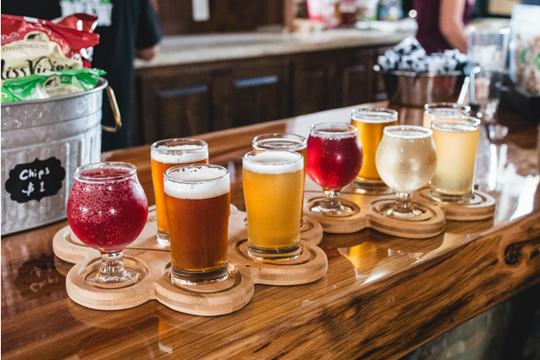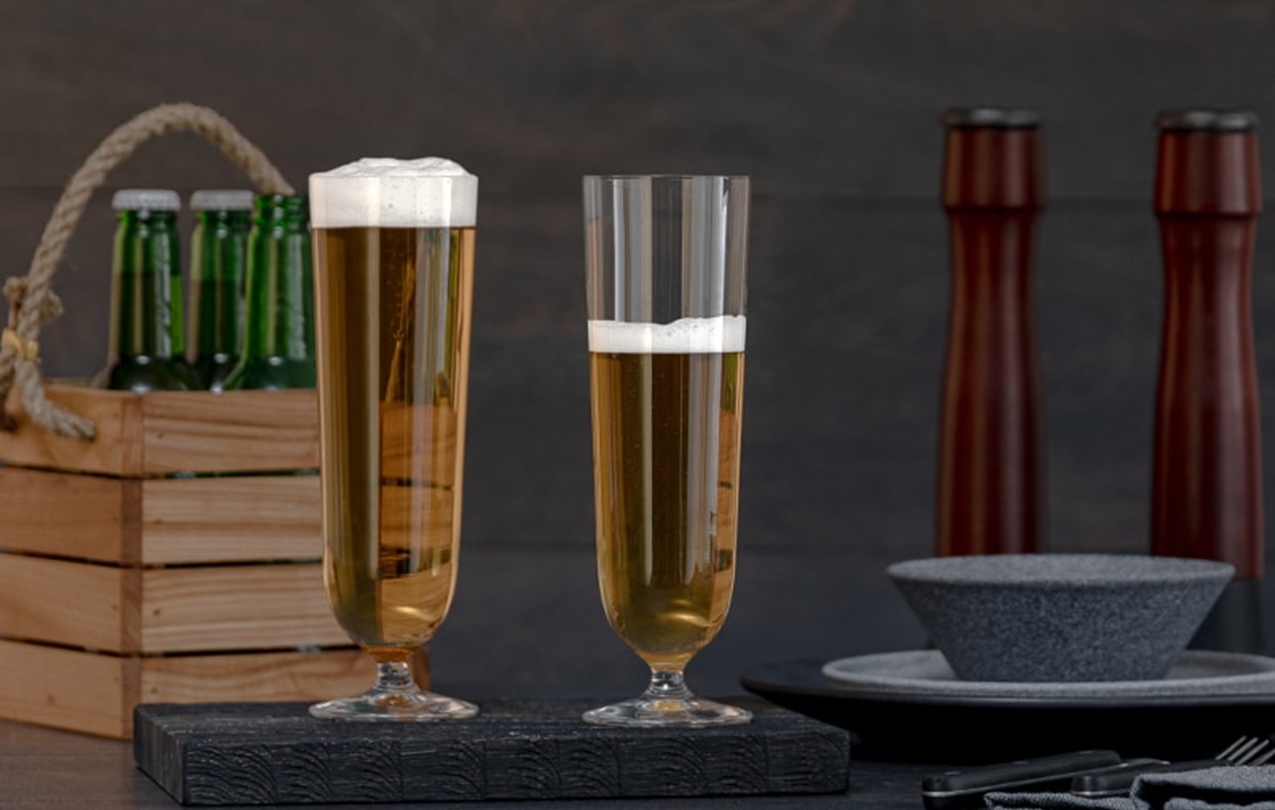Learn more about beer.
On this page you will find tips on how to maximize the experience of your beer. We give you inspirational beer trends, how to serve beer, a beer glass guide and much more.
On this page you will find tips on how to maximize the experience of your beer. We give you inspirational beer trends, how to serve beer, a beer glass guide and much more.
It’s both healthy and trendy to drink non-alcoholic beer. Nearly one in ten beers sold in the Swedish trade today are non-alcoholic. The trend is growing and spreading rapidly all over the world. Factors to the trend might be that we have a bigger interest in health and awareness of how alcohol affects the body. One reason could also be that we more frequently visit restaurants on weekdays compared to before, and then want to enjoy a beer without alcohol.
Sour Beer gets its sour taste by having the beer spontaneously fermented or by adding lactic acid bacteria. Most often, sour beer is created by the breweries experimenting with aromas and flavours from different berries and fruits. The trend started a few years ago but gets bigger every day.
The world’s first beer bottle in paper was presented in 2019 by Carlsberg. We believe that sustainable bottles are a trend that will grow big, and that producers will have the climate in mind when designing future beer bottles. According to Systembolaget is it climate smart to choose return glass bottles, PET and cans – while the glass bottle is the least climate smart to choose. To make a climate-smart choice at Systembolaget there’s blue labels as hallmarks of the sustainable bottles.
New microbreweries are founded every year. A microbrewery is a small brewery that uses artisanal methods based on the classic brewery tradition in beer making. To be classified as a microbrewery, it’s not allowed to manufacture batches larger than 200 liters. The beer is usually brewed by beer lovers and therefor is artisanal/craftbeer made with love and good ingredients. Many microbreweries experiment and manufacture beers with exciting new flavours.
1. TILT THE GLASS - Tilt the glass and pour the beer down the edge of the glass. In this way, you retain all carbonic acid and get less foam, but the taste and aroma aren’t released.
2. PLACE THE GLASS FLAT - Place the glass flat on the table and pour the beer in the middle of the glass from about 5-10 centimetres of height. In this way, you get a lot of foam, while the taste and scent are released. It also disappears more carbonic acid, which makes it perceived softer.
3. LEAN FIRST, THEN HOLD FLAT - a combination of 1 and 2. Tilt the glass and gently pour along the edge, then pour the beer flat/straight into the middle of the glass. In this way, taste and scent are released, while foam and carbonic acid remain.
Source: systembolaget.se
Most people drink beer well chilled, but that doesn’t mean it’s the best option. Much of the taste and scent can be lost when the beer is cooled, while a slightly higher temperature opens up for both aroma and fullness.
|
Light beer |
8 - 10°C |
| Dark beer |
10 - 12°C |
| Light lager |
8 - 10°C |
| Medium dark lager |
10 - 12°C |
| Porter & Stout and Imperial |
Dry 10 - 12°C, Sweet 14 - 16°C |
| Ale Belgian style |
Light 8 - 10°C, Dark 10 - 12°C |
| Ale British-American style |
Light and medium dark 8 - 10°C, dark 10 - 12°C |
| Ale in German style |
8 - 10°C |
| Wheat beer |
6 - 8°C |
| Sour Beer |
6 - 8°C |
| Other beers |
Light 8 - 10°C, Dark 10 - 12°C |
Here are some guidelines in the search for the perfect beer.
The environment you store the beer in has a big impact on the taste. Avoid rapid temperature changes and choose a dry and dark environment. If the climate is too humid, there’s a risk that the caps will rust. If, on the other hand, the bottle has a natural cork, humidity is needed to prevent the cork from drying. The most important thing is that the temperature doesn’t change quickly or is exposed to light.
The optimal temperature when storing is around 10-15 degrees. In warmer temperatures, the storage process speeds up, which makes it easier for the beer to get bad, while colder temperature makes the storage process slow down and the storage time increase. For certain types of beer, such as light lager, lower temperatures are recommended.
Should the bottle be stored standing or lying down?
There are different opinions whether the bottle should be stored standing or lying down. Some claim that the bottle only should be stored standing, while others says that bottles with cork should be stored lying down to prevent the cork from drying out and let in oxygen.
There are many different types of beer, all of which have different tastes, aromas and character. To get the most out of the experience, you can choose a beer glass that helps elevate the drink. Below we will go through different types of beer glasses and what kinds of beer they fit.
Read more






